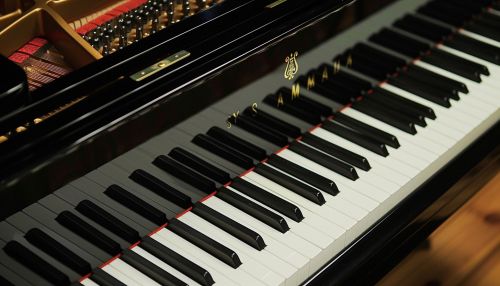Pitch (music)
Introduction
Pitch in music is a perceptual property that allows the ordering of sounds from low to high and is associated with the frequency of the sounds. Pitch is one of the fundamental aspects of music and sound, and it is a complex phenomenon that combines physical, perceptual, and cultural aspects.
Physical Aspects of Pitch
The physical aspect of pitch pertains to the frequency of the sound wave. In general, the frequency of a sound wave is measured in cycles per second, or Hertz (Hz). The human ear can typically hear frequencies between 20 Hz and 20,000 Hz. Sounds with higher frequencies are perceived as having a higher pitch, while sounds with lower frequencies are perceived as having a lower pitch. However, the relationship between frequency and perceived pitch is not linear, but logarithmic. This means that as frequency increases, larger increases are needed to produce a perceptible change in pitch.


Perceptual Aspects of Pitch
The perceptual aspect of pitch relates to how the human auditory system processes sound. The ear contains a structure called the cochlea, which is filled with fluid and lined with tiny hair cells. When sound waves enter the ear, they cause the fluid in the cochlea to move, which in turn causes the hair cells to move. Different frequencies of sound cause different parts of the cochlea to vibrate, which sends different signals to the brain. The brain then interprets these signals as different pitches.
Cultural Aspects of Pitch
The cultural aspect of pitch pertains to the way different cultures use and interpret pitch in their music. For example, in Western music, pitch is typically organized into scales, which are sets of pitches arranged in ascending or descending order. The most common scale in Western music is the major scale, which consists of seven pitches. Other cultures, such as those in India and the Middle East, use different scales that can include more or fewer pitches.
Pitch and Melody
Melody is a sequence of pitches. It is one of the most recognizable aspects of music. Melodies can be simple or complex, and they can convey a wide range of emotions and ideas. The way pitches are arranged in a melody can have a significant impact on the way the melody is perceived. For example, a melody that ascends in pitch can create a sense of rising tension or excitement, while a melody that descends in pitch can create a sense of resolution or relaxation.
Pitch and Harmony
Harmony in music refers to the combination of multiple pitches. When two or more pitches are played at the same time, they create a harmony. Harmonies can be consonant, meaning they sound pleasant and stable, or dissonant, meaning they sound tense and unstable. The study of harmony involves understanding how different combinations of pitches can create different effects.
Pitch and Rhythm
Rhythm in music refers to the timing of the pitches. Rhythm involves the length of the notes, the pattern of the beats, and the tempo, or speed, of the music. While rhythm does not directly involve pitch, the two are closely related. For example, a melody can be recognized by its rhythm as well as its pitch.
Pitch in Different Musical Instruments
Different musical instruments produce pitches in different ways. For example, in a piano, pitch is produced by striking a string with a hammer. The length, thickness, and tension of the string determine the pitch of the note. In a trumpet, pitch is produced by buzzing the lips into a mouthpiece and changing the length of the tubing by pressing the valves. In a violin, pitch is produced by drawing a bow across a string and changing the length of the string by pressing it down on the fingerboard.
